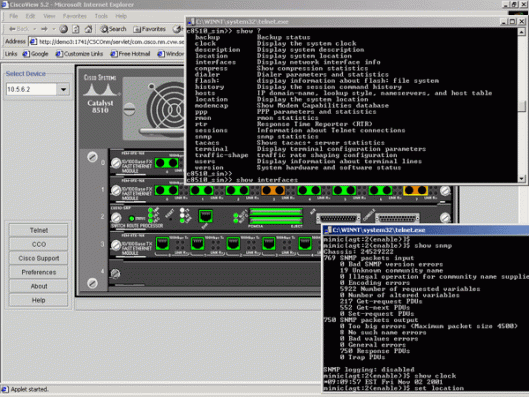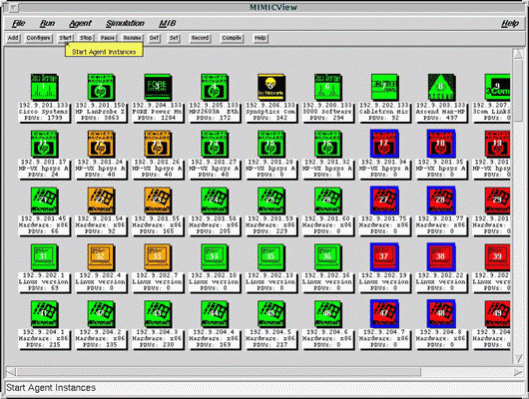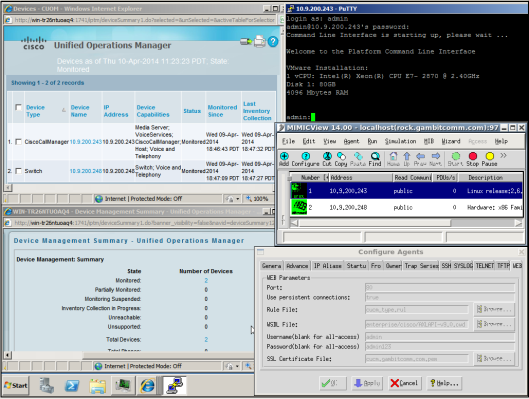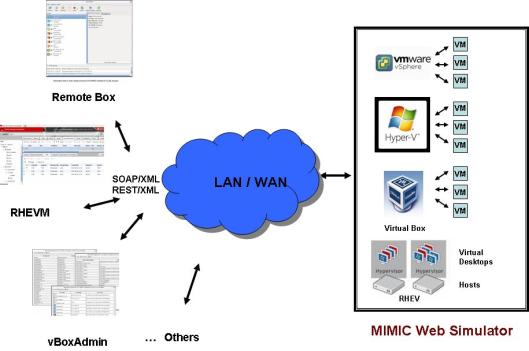MIMIC simulator is a product suite consisting of
network simulation software for network engineers. The simulator has
several components which are related to simulation of managed networks
and data centers.The MIMIC IOS simulator is meant to solve a classical simulation problem.
With
it is ability to fully support Cisco IOS software and SNMPV1, V2, V2c,
V3, the MIMIC IOS simulator is the most integrated tool in the market.
You can simulate up to 100,000 devices in a single workstation and an
unlimited number of devices can be simulated by distributing it over
multiple workstations. With the simulator, you can access devices using
telnet, SSH and SNMP. When changes are made using one protocol, they are
reflected in other.
MIMIC IOS simulator
includes with many ready to go simulations for Cisco devices which
include the 3640, 7206, 6260, 6500 and works seamlessly with Cisco Prime
Infrastructure, GSR manager, Cisco works 2000 and other network
management applications. If you want to test your networking
applications, you can use hundreds of simulated Cisco IOS commands. Also
with the MIMIC CLI/IOS recorder you are can record any command and
simulate it.

The IOS simulator
simulates the following components to approximate a Cisco device. First
it can simulate the telnet using a standard server thus allowing users
to log into simulations in order to control the behavior and
configuration of the simulations. A device which is telnet-enabled can
be simulated using MIMIC. If you want a secure access, SSH version 1.5
and 2.0 are supported by the simulator. There is also support for remote
logging, where SYSLOG messages are sent to a SYSLOG server.
MIMIC
Simulator can simulate the entire network. The configurations are
run-time customizable. MIMIC responds to queries on an of its configured
IP addresses so it is as if the NMS application is talking to an actual
device. The simulator also includes MIMIC Recorder where the behavior
of the device on a network is simulated by capturing a snapshot of the
device in operation. From here the simulation can then easily replay the
entire network.

The
simulator also includes MIMIC Compiler. With this, you can import any
SMI compliant MIB and then extend it to the set of defined devise to
support proprietary equipment. The working principle of the SNMP simulation is that the SNMP protocol is an interface that can be simulated upon request.
Follow Gambit Communications on:-















